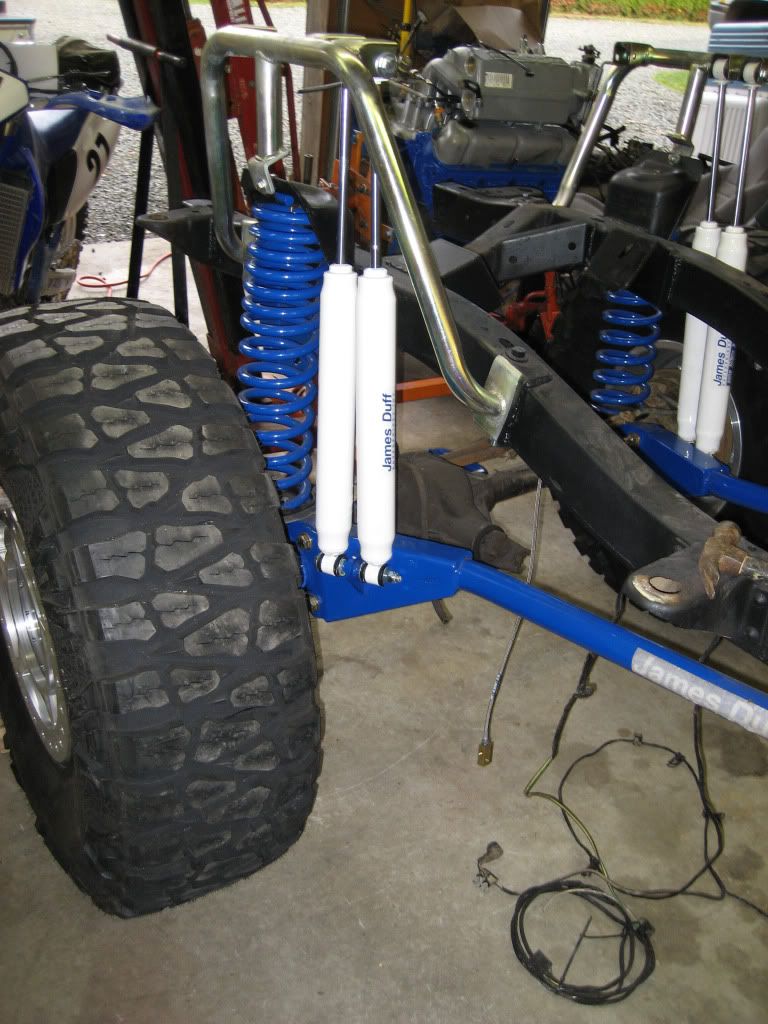DanWheeler
Bronco Guru
ok, i may be a convert to the "bend near the frame" camp.







I get it now. that makes perfect sense - bring the tube straight up to the frame where it would have been a straight shot for the stock arm then bend it straight back the rest of the way to the new frame mount which is further back.
Cage and Duff both have the bend down by the C bushing. Now I'm not sure if that was by design or because they dont want to bend 1/4" wall DOM.
with regards to your study wire example, yes the bend in the middle would be more likely to bend however if you put a bend at the end wouldn't the long section be more likely to bend? Either way, this DOM aint bending(we broke a bender die just trying to get 10 degrees)
also, regarding the c-bushings and flex - the C-bushings are absolutely responsible for a significant amount of flex. Imagine if one wheel was stuffed in the wheel well and the other was dropped down in a hole. There would be a difference in rotation of your radius arms which is handled by the C-bushings (albeit, not very easily and not very well) Either the c-bushings flex or the axle housing twists. (which we know its not supposed to unless you have the wristed axle housing)

Here is the best picture i had of the duff arms. You can see the bend in the tubing right before where the arms turn into square stock, and then another bend in the square stock where they bolt to the c cups. There are 2 big bolts there.


The joint on the end of the arm does all of the flexing.
I went with the 3" ballistic joints becuse they take a 3/4" bolt. Johnny Joints take a 9/16" bolt. I figured if 2 bolts are going to be holding my entire front-end in place then I would feel better if they were bigger than 9/16ths.
When I built arms very similar I used the standard ballistic joints that accept a 9/16" bolt. Something I did do was make sure that none of the threads of the bolt were inside of the mount to create a weak place. I bought a longer bolt than needed and ran a die down it to where I needed the threads to end.
The bushing joint on stock arms (frame end) is one of the biggest limiting factors in the flex in my opinion. Even if you took a stock arm and replaced the end with a heim or johnny joint that is made to allow movement I think you would see much improvement.

The C bushing locates the axle, when the suspension cycles I.E. one side drops and the other side is stuffed in the wheel well, the C bushing does have some 'give', but the real 'flex' is at the joint end. I believe your diagram is wrong. Think of it this way your axle shaft will stay in line with your axle and radius arms.
Pick up a broom and hold it in front of you horizontally with both hands gripping the broom handle about 2 feet apart. Now, try to lower the right side of the broom to waist level without bending your body or your wrist. You can't do it without bending your wrist.
oh, and dont let the broom handle rotate in either hand.
This example is not the same as the bronco. On the bronco the radius arm can and does rotate at the frame mount allowing one side of the axle to be lower or higher than the other. You would have to have rotation in your shoulder for it to be the same as the bronco set up in your given example.
I have a question...
If you are going to go thru the trouble building an extended arm with the main goal more flex, why use the C busing at all? I have the duff long arms and think a set-up like rjlougee's would work MUCH better. And you wouldn't mess with damm C bushings to change your castor. I know the cost would be more as a result of the arm ends. It just seams like a lot of work to modify the stock arms for a small gain vs doing a custom arm like these and getting a lot more flex??
Oh, and as I mentioned this is not my bronco. It is rjlougee's. And I know the coil overs will add a lot too, but I am speaking of just the arms... since that is what the discussion is.
thanks






